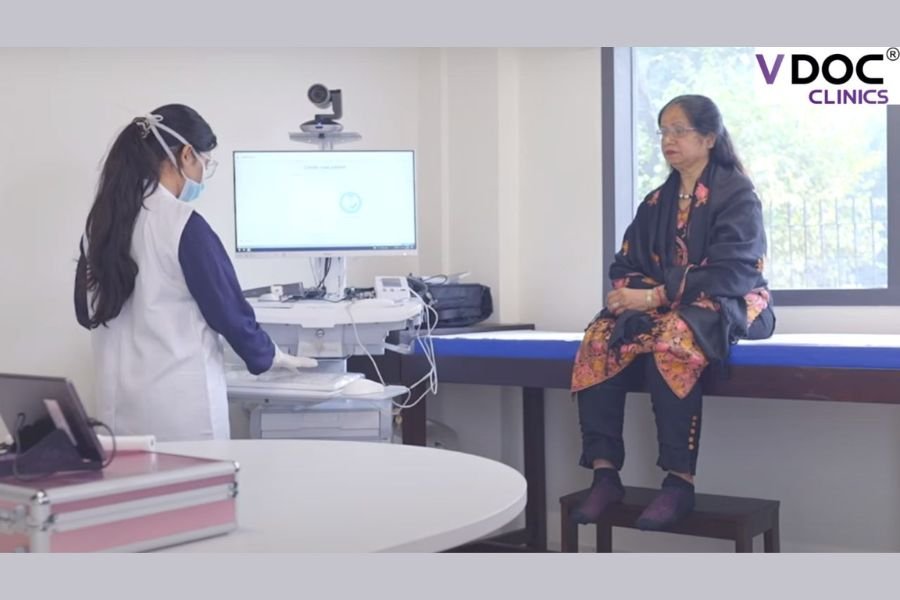
VDOC for Women’s Health Empowerment
India, January 6: We often see problems associated with accessibility and affordability faced by women in rural areas. In contrast, in the urban regions, many believe there is no such difficulty. Still, shockingly there is a disguised issue of accessibility that prevails in the urban sector, even when affordability is not an issue. To examine the difficulties females face, we can look at different stages of a woman’s life.
Firstly, the adolescent stage. During this stage, they are in school. Girls have many questions about their health as they go through puberty, which is also accompanied by various puberty-related health issues. Many of them are uncomfortable or do not prefer to share such problems with their parents, who are a gateway for them to access any health services. Moreover, this lack of access leaves them to look for answers on the internet or seek advice from their peers who aren’t themselves informed, which can sometimes be detrimental to their health. Similarly, they also face such problems when in college and post that when they join the workforce.
This is a prime time of their adulthood, and reproductive and sexual health becomes one of the major concerns for females; along with that, this is a period of onset of other diseases like breast and cervical cancer and various non-communicable diseases. However, women are often apprehensive about going to a doctor because of the stigma attached to reproductive health.
Another reason is the obligation of women towards their professional and personal life that hinders them from seeking health services. The high OPD fees also act as a deterrent to visiting a doctor for trivial questions as well as preventive checkups. Although many companies reimburse such health costs, many find it inconvenient to go to a doctor when it is not necessary. Furthermore, there are socioeconomic differences between urban women and women at lower economic levels. Domestic workers are more distressed in availing of health services; some often become victims of quacks.
The advancing year comes with its own set of difficulties. There is an increased requirement for preventive, curative, rehabilitative, and palliative services. However, these services aren’t provided at their doorstep. So older women often depend on their families or partners for transportation to access any healthcare facility. Sometimes traveling for them is a pain with their underlying condition adding to the difficulty of accessing healthcare services if we remove the concern of affordability. The problems for women at all stages are exacerbated by the patriarchal structure of society where the decision-making power lies with the male members, even if it comes to their women’s health. All the difficulties I mentioned above are not airtight to specific age groups but are experienced across age groups.
Subsequently, these difficulties that I mentioned above are some examples of what I mean by disguised accessibility of healthcare services.
Telemedicine can bridge this gap by ensuring the accessibility of healthcare professionals for all females in all age groups in urban areas. This can be guaranteed by providing evidence-based telemedicine services in schools, offices, and residential societies. However, it is impossible to physically make a doctor available 24/7 as well as it adds to the cost of an establishment. Nevertheless, telemedicine makes it possible to tackle both problems. It can make access to healthcare professionals easy, convenient, and cost-friendly for women so that women can have health security for their evolving health needs. It could also boost access to primary health care as telemedicine offers easy accessibility and affordability, which were significant hindrances when seeking preventive health services.
Moreover, primary health care plays an essential role in responding to women’s unique health needs through advanced age and bridging care during life transitions, from puberty and reproduction to menopause, by acting as the first line of defense to any significant health concern. Therefore, telemedicine can be an enabler of women’s power over their health, leading to a healthy nation as a nation is only as strong as a woman’s health.
Article By: Aishwarya Pathak, Co-Founder VDOC Lifesciences Pvt Ltd.
If you have any objection to this press release content, kindly contact pr.error.rectification@gmail.com to notify us. We will respond and rectify the situation in the next 24 hours.
The post VDOC for Women’s Health Empowerment appeared first on City Lights.
